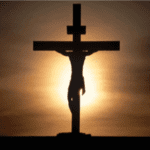![]()
The Great Religious Books of Early Judaism
By Daniel C. Peterson and William J. Hamblin
The foundational text of Judaism is, of course, the Hebrew Bible, which has been translated many times. Many English-speaking Jews prefer the recent translation by the Jewish Publication Society, The Jewish Study Bible (Oxford, 2003). Closely related to the Bible, the Apocrypha are a collection of Jewish writings from the fourth through the first centuries BC. Never accepted as scripture by the rabbis, these books survive largely in a Greek translation of the Bible known as the Septuagint, which is the canonical Bible of the Greek Orthodox Church. Many modern translations of the Bible, such as the New Oxford Annotated Bible with Apocrypha (1991), include the Apocrypha.
The Dead Sea Scrolls-a collection of Jewish writings from the first few centuries BC-are perhaps the most famous archaeological discovery of this century. These documents include legal texts, biblical commentaries, prayers, hymns, temple rituals, and apocalyptic visions, offering important insights into sectarian Judaism at the time of Jesus. Two modern translations contain nearly all the non-biblical texts: F. Martinez, The Dead Sea Scrolls Translated (Brill, 1996), and G. Vermes, The Complete Dead Sea Scrolls in English (1998). The oldest surviving biblical manuscripts were also found among the Dead Sea Scrolls, and have recently been translated: M. Abegg, ed., The Dead Sea Scrolls Bible (1999).
The two or three centuries before and after Jesus were in many ways a golden age for Jewish writers. Josephus and Philo, two Hellenized Jews writing in Greek, offer a great deal of important historical and theological information from this age. Josephus is indispensable for the history of Judea under the early Roman Empire (W. Whiston, trans., The Works of Josephus [Hendrickson, 1987]). Philo’s theological and philosophical speculations can be found in The Works of Philo (Hendrickson, 1993). This same period witnessed the collection or writing of apocalyptic texts and expansions of the Hebrew Bible known as pseudepigrapha. Dozens of these documents are translated in James Charlesworth, ed., Old Testament Pseudepigrapha, 2 vols. (Doubleday, 1983-5).
From the second through the sixth centuries A.D., rabbis attempted to codify a complex ethical and legal system based on their interpretations of the Bible. These efforts culminated in the writing of the Mishnah (H. Danby, The Mishnah, [Oxford, 1933])-a legal commentary on the Bible-and the Talmud, a massive commentary on the Mishnah. The best complete translation of the Talmud is I. Epstein, The Talmud, (Soncino, 1961). A new translation by A. Steinsaltz, The Talmud: The Steinsaltz Edition, (1989) is in progress. Medieval Jews developed a complex set of prayers, psalms and rituals for holy days; a translation can be found in Nosson Scherman, The Complete ArtScroll Siddur (1987). During this period the rabbis also collected a treasure trove of fascinating religious legends and stories called aggadah: Judah Nadich, The Legends of the Rabbis, 2 vols. (1983), and H. Bialik, The Book of Legends (Schocken, 1992). Louis Ginzberg, Legends of the Jews, 7 vols. (1954), contains a massive summary of Jewish legendary expansions on the Hebrew Bible.
Jewish love of scripture manifested itself in the creation of numerous commentaries on the Hebrew Bible, called midrash. Two collections offer introductions: R. Hammer, The Classic Midrash, (1995), and H. Freedman, The Midrash Rabbah (Soncino, 1961-1977). Jewish mysticism also become increasingly important in the Middle Ages. A several bibliographies of English translations of Jewish mystical texts can be found at
https://www.digital-brilliance.com/kab/karr/index.htm
More details and many additional books and translations can be found in Barry Holtz, Back to the Sources (1984) and Barry Holtz, The Schocken Guide to Jewish Books (1992). For general background and reference, one should consult The Oxford Dictionary of the Jewish Religion (1997), which contains entries on each of these books, authors and topics.
Note: In last week’s column on Mary we used the term “adoration” to describe the honor given to Mary in Greek Orthodoxy, Roman Catholicism and other Christian traditions. Adoration is a technical theological term which is specifically not used in relationship to Mary in the Catholic tradition. We apologize for the error.

















